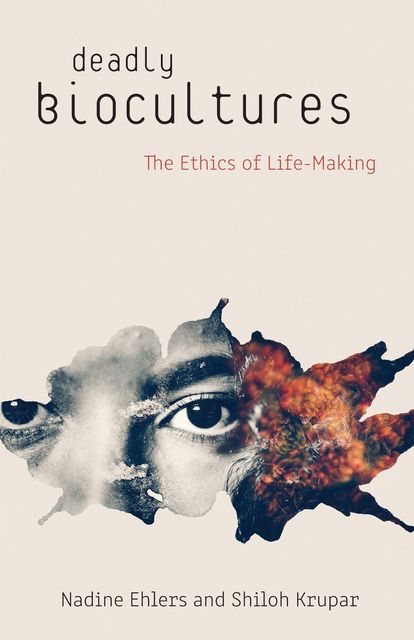Deadly Biocultures
The Ethics of Life-Making
In their seemingly relentless pursuit of life, do contemporary U.S. “biocultures”—where biomedicine extends beyond the formal institutions of the clinic, hospital, and lab to everyday cultural practices—also engage in a deadly endeavor? Challenging us to question their implications, Deadly Biocultures shows that efforts to “make live” are accompanied by the twin operation of “let die”: they validate and enhance lives seen as economically viable, self-sustaining, productive, and oriented toward the future and optimism while reinforcing inequitable distributions of life based on race, class, gender, and dis/ability. Affirming life can obscure death, create deadly conditions, and even kill.
Deadly Biocultures examines the affirmation to hope, target, thrive, secure, and green in the respective biocultures of cancer, race-based health, fatness, aging, and the afterlife. Its chapters focus on specific practices, technologies, or techniques that ostensibly affirm life and suggest life’s inextricable links to capital but that also engender a politics of death and erasure. The authors ultimately ask: what alternative social forms and individual practices might be mapped onto or intersect with biomedicine for more equitable biofutures?
Background photo by Sara Bakhshi on Unsplash.

Table of Contents
Metadata
- rightsThe University of Minnesota Press gratefully acknowledges support for this open-access edition from the Edmund A. Walsh School of Foreign Service at Georgetown University and the University of Sydney.
An earlier version of chapter 1 was published as Nadine Ehlers and Shiloh Krupar, “Hope Logics: Biomedicine, Affective Conventions of Cancer, and the Governing of Biocitizenry,” Configurations 23, no. 1 (2015): 385–413; copyright 2014 by The Johns Hopkins University Press. A different version of chapter 2 was published as Shiloh Krupar and Nadine Ehlers, “Target: Biomedicine and Racialized Geo-body-politics,” Occasion 8 (2015), https://arcade.stanford.edu/occasion/target-biomedicine-and-racialized-geo-body-politics; made available to the public by a Creative Commons Attribution-NonCommercial-ShareAlike 3.0 United States License. Chapter 2, in modified form, was published as Shiloh Krupar and Nadine Ehlers, “Biofutures: Race and the Governance of Health,” Environment and Planning D: Society and Space 35, no. 2 (2017): 222–40; reprinted by permission of SAGE Publications, Ltd.; http://journals.sagepub.com/doi/abs/10.1177/0263775816654475. A different version of chapter 4 was published as Nadine Ehlers, “Fat Is the Future: Bioprospecting, Fat Stem Cells, and Emergent Breasted Materialities,” in Fat: Culture and Materiality, ed. Christopher Forth and Alison Leitch (London: Bloomsbury, 2014), 109–22; reprinted by permission of Bloomsbury Academic, imprint of Bloomsbury Publishing Plc. Parts of chapter 5 were published as Shiloh Krupar, “Green Death: Sustainability and the Administration of the Dead,” cultural geographies 25, no. 2 (2018): 267–84; reprinted by permission of SAGE Publications, Ltd.; http://journals.sagepub.com/doi/abs/10.1177/1474474017732977.
Copyright 2019 by the Regents of the University of Minnesota
- isbn978-1-4529-6570-3
- publisherUniversity of Minnesota Press
- publisher placeMinneapolis, MN
- restrictionsAll rights reserved. No part of this publication may be reproduced, stored in a retrieval system, or transmitted, in any form or by any means, electronic, mechanical, photocopying, recording, or otherwise, without the prior written permission of the publisher.
- rights holderRegents of the University of Minnesota
- doi


